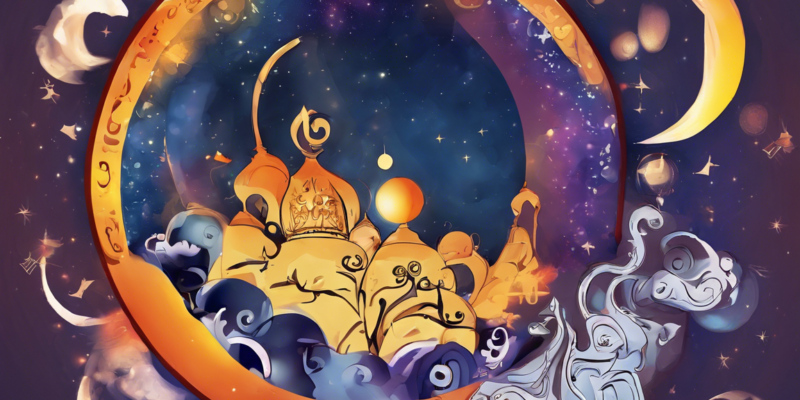A moonrise is a spectacular phenomenon that enchants people across cultures and generations. The moment when the moon emerges over the horizon brings a sense of peace, beauty, and wonder. In Hindi, the rise of the moon is referred to as “Chand Nikalne Ka Time”, a phrase that captures the anticipation and magic of this celestial event.
Understanding Moonrise
The moonrise time varies each day based on the position of the moon in its orbit around the Earth. Unlike the Sun, which rises in the east and sets in the west every day, the moonrise direction changes constantly. Therefore, it is essential to know the timing and direction of the moonrise to experience this enchanting event fully.
Factors Affecting Moonrise Time
Several factors influence the timing of moonrise, including:
1. Lunar Cycle:
- The moonrise time shifts as the moon progresses through its lunar phases. During a full moon, the moonrise coincides with sunset, offering a breathtaking view as the moon ascends just as the Sun dips below the horizon.
2. Latitude:
- The moonrise time also varies based on the observer’s latitude. Locations closer to the equator may experience moonrise closer to the east, while higher latitudes might see the moon rising more towards the northeast or southeast.
3. Season:
- The season can influence the moonrise direction due to the Earth’s tilt and its orbit around the Sun. In winter, the moonrise point may shift towards the southern horizon, while in summer, it may lean more to the north.
Optimal Time for Moon Gazing
For optimal moon gazing, several key considerations should be kept in mind:
1. Full Moon:
- The full moon phase offers an excellent opportunity for moon watching, with the moonrise aligning closely with sunset. This celestial alignment provides ample light and a stunning visual display.
2. Clear Sky:
- To fully appreciate the moonrise, a clear sky is essential. Cloud cover or haze can obscure the moon as it ascends, diminishing the viewing experience.
3. Elevation:
- Choosing a vantage point with a clear view of the eastern horizon can enhance the moonrise experience. Higher elevations offer unobstructed vistas, allowing for an expansive sight of the rising moon.
The Magical Aura of Moonrise
The moonrise has inspired artists, poets, and dreamers throughout history. Its mystical allure evokes emotions of romance, mystery, and introspection. Watching the moon ascend, casting its silvery glow across the landscape, can be a profoundly moving experience.
FAQs (Frequently Asked Questions)
1. What is the significance of moonrise in different cultures?
- The moonrise holds symbolic importance in various cultures, representing renewal, femininity, and the cyclical nature of life.
2. Can the moonrise time be predicted in advance?
- Yes, the moonrise time can be calculated accurately based on astronomical data, allowing enthusiasts to plan their moon-gazing activities.
3. Are there specific rituals associated with moonrise?
- Some cultures have rituals or traditions linked to the moonrise, such as meditation, moon salutations (Chandra Namaskar), or moon ceremonies.
4. How does the moon appear during its rise?
- The moon may appear larger near the horizon due to an optical illusion known as the moon illusion, where it seems closer to objects on Earth.
5. Can the moonrise time vary from day to day?
- Yes, the moonrise time shifts daily due to the moon’s orbit, ensuring a unique viewing experience each evening.
6. Is there a best location for viewing the moonrise?
- Ideal locations for watching the moonrise include open spaces with uninterrupted views of the eastern horizon, such as beaches, mountaintops, or deserts.
7. What equipment is recommended for observing the moonrise?
- While the moonrise can be enjoyed with the naked eye, binoculars or a telescope can enhance the details of the moon’s surface and its craters.
8. Are there specific apps or websites to track the moonrise time?
- Numerous apps and websites, such as Stellarium, SkySafari, or Time and Date, provide accurate moonrise predictions based on location and date.
9. How does moonrise differ from moonset?
- Moonrise refers to the moon ascending above the horizon, signaling the start of nighttime viewing, while moonset marks the moon’s descent below the horizon as dawn approaches.
10. Can lunar eclipses coincide with moonrise?
- Yes, during a **lunar eclipse**, the **moonrise** can offer a unique opportunity to witness the eclipsed **moon** as it emerges from Earth's shadow.
In conclusion, the moonrise is a captivating celestial event that offers a blend of beauty, wonder, and tranquility to those who pause to observe it. Whether viewed alone in quiet contemplation or shared with loved ones under the night sky, the rising moon continues to inspire awe and ignite the imagination. Take the time to witness a moonrise and experience the enchanting magic of this timeless phenomenon.










